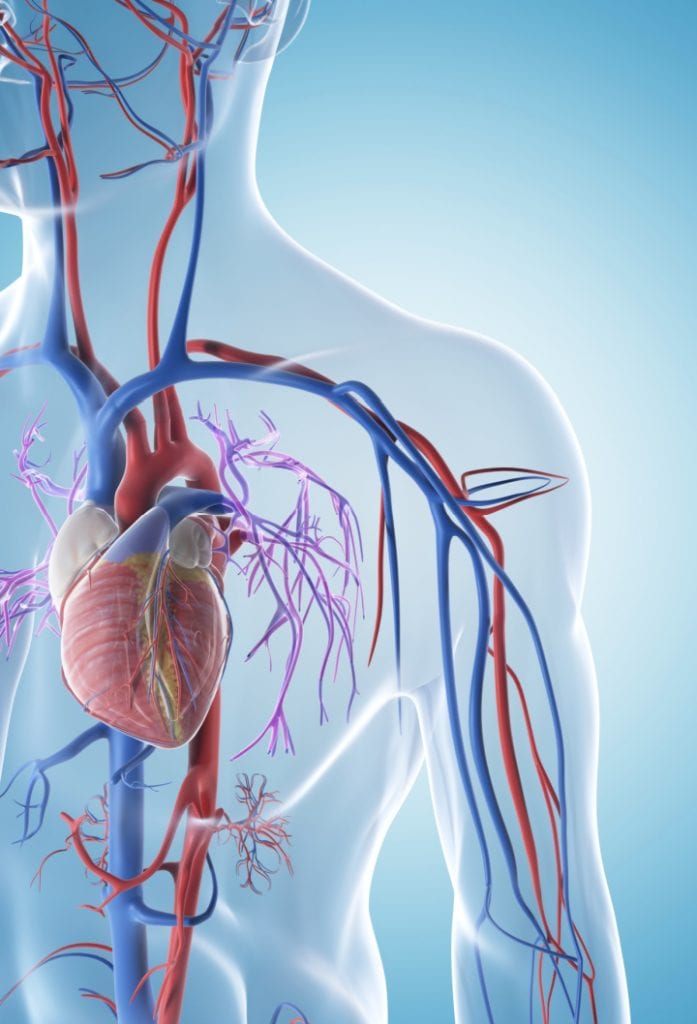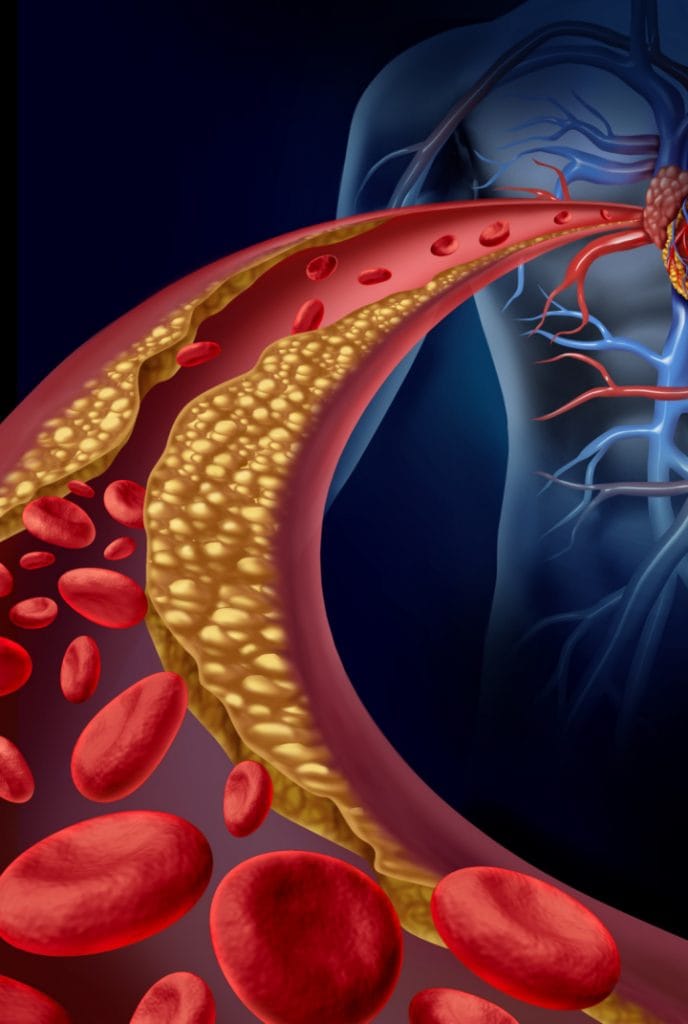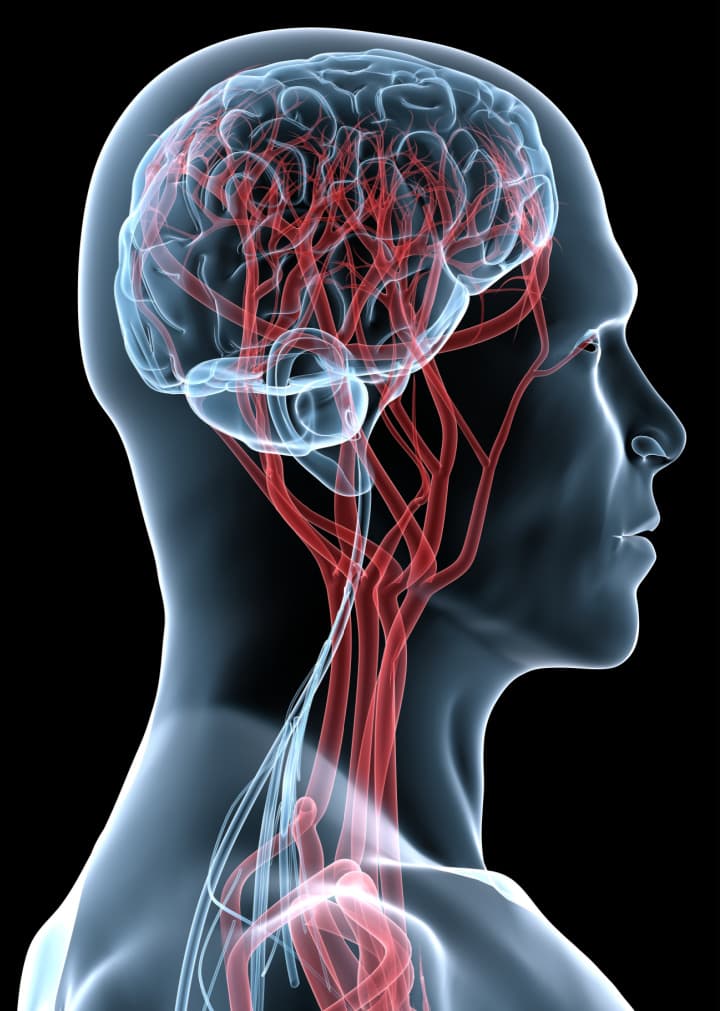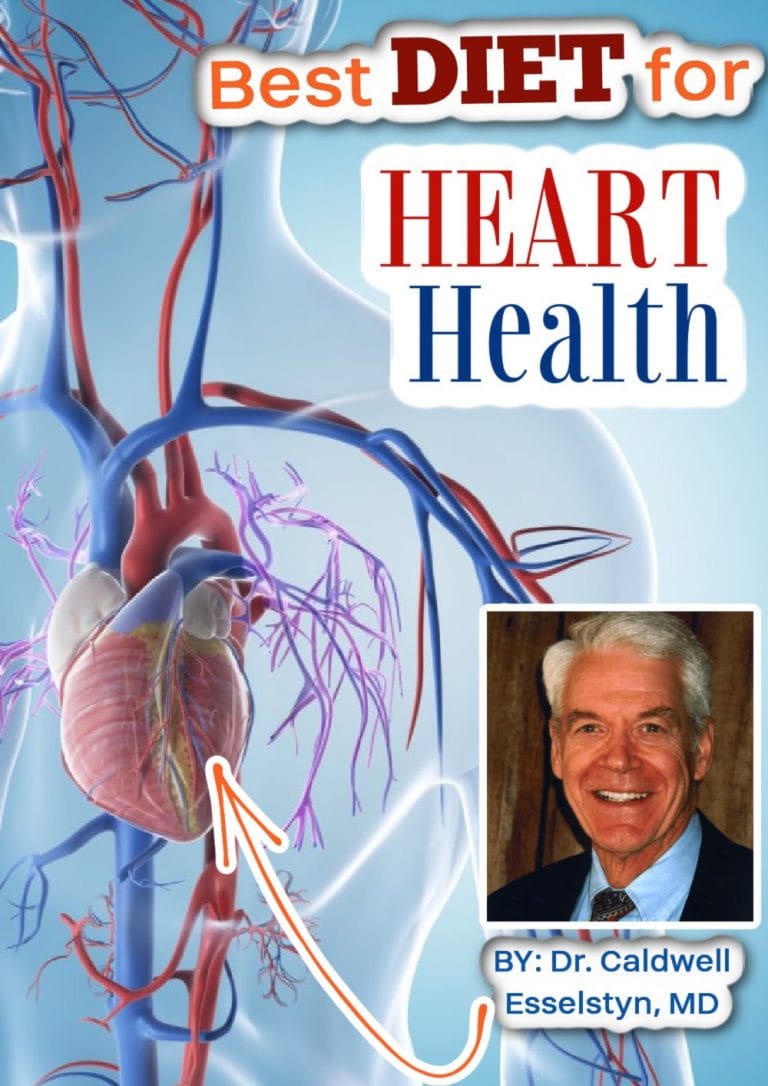Diet for Heart Health and More
In this article, Dr. Caldwell Esselstyn, Jr., MD, Consultant at the Cleveland Clinic Center for Wellness and Preventative Medicine and author of Prevent and Reverse Heart Disease, shares his expertise on the best diet we can eat for our heart and overall health.

By: Dr. Caldwell Esselstyn, Jr., MD
Healthcare crisis
Healthcare, to put it mildly, is an industry out of control. As of 2021, nearly one-fifth of America’s gross domestic product is spent on health.
What can we do? I have a fairly radical answer for that question: We should aim at eliminating chronic illness. That is not an unattainable goal.
Most of America’s health dollars are spent on the late stages of heart disease, strokes, hypertension, diabetes, and the common Western cancers of the breast, the prostate, and the colon.
Like heart disease itself, these others are part of the bitter harvest of the toxic American diet. And like traditional treatments for heart disease, their treatment is not preventive.
Having your breast cancer amputated, your malignant prostate gland radically removed, or your cancerous colon resected is painful, may be disfiguring, and costly–and too often does not resolve the underlying problem.
Heart disease and stroke
My own research has concentrated on coronary artery disease and how plant-based nutrition can prevent and also arrest and reverse it. But with every year that passes, there is more proof that a plant-based diet has similar salutary effects on other chronic diseases, as well.
Take stroke, for example–the third leading cause of death in the United States. The evidence is overwhelming that if you eat to save yourself from heart disease, you eat to save yourself from a stroke.
Types of stroke
There are two types of stroke. In hemorrhagic, the less common of the two, a blood vessel in the brain ruptures because of high blood pressure or a genetic weakness of the vessel wall known as an aneurysm. A plant-based diet cannot do anything to cure genetic aneurysms. But it will definitely help reduce blood pressure, an important step in the right direction.
On the more common variety of stroke–ischemic or embolic stroke– there is even better news. These have the same origin as coronary artery disease. An ischemic stroke occurs when fat and cholesterol block blood vessels that carry oxygen and nutrients to the brain, just as they may block the coronary arteries that nourish the heart.

An embolic stroke also deprives the brain of nutrients and oxygen, but in a slightly different way. When an artery sheds part of this diseased inner lining, that debris–called an embolus–is carried through the bloodstream until it gets wedged into a blood vessel that is too small for it to traverse. Now it blocks the flow of blood through that vessel.
This may happen almost anywhere in the body, blocking blood flow to a kidney, an intestine, a leg, or some other organ. When it occurs in vessels that nourish the brain, it is a stroke.
Plaque in the arteries
In the 1990s, Pierre Aramenco, a physician from Paris, studied this process in Frenchmen who were at risk for vascular disease.1 Using ultrasound probes inserted through the esophagus, Dr. Aramenco measured the thickness of atherosclerotic debris growing on the inside of each patient’s ascending aorta, the giant artery that climbs directly from the heart and sends branches to the brain.
He divided the men into three groups. One group showed 1 millimeter of debris on the lining of the aortic wall. The second had debris measuring between 1 and 3.9 millimeters thick. The third had more than 3.9 millimeters of debris.
Dr. Aramenco followed the patients for three years. Not surprisingly, the group with the greatest amount of plaque growth shed the greatest number of emboli and had the most strokes.
The buildup of fatty plaques in blood vessels can cause damage in many different ways. For example, when an aorta that contains plaque is clamped during coronary bypass surgery, plaque debris is loosened and enters the bloodstream as an embolus.
Using ultrasound to monitor the middle cerebral artery in the brain, technicians can distinctly hear the embolizing plaque as it enters the brain. If the patient dies during surgery, the plaque debris may be found in the brain at autopsy.

Clogged arteries and brain function
This tragic sequence helps explain the fearful loss of cognition in coronary artery bypass patients.2 But neuroradiologists also report that using magnetic resonance imaging, they can detect little white spots in the brains of Americans starting at about age fifty.
These spots represent small, asymptomatic strokes. The brain has so much reserve capacity that at first these tiny strokes cause no trouble. But, if they continue, they begin to cause memory loss and, ultimately, crippling dementia. In fact, one recently reported study found that the presence of these “silent brain infarcts” more than doubles the risk of dementia.3
We now believe, in fact, that at least half of all senile mental impairment is caused by vascular injury to the brain. Not long ago, a Swedish study of five hundred eighty-five-year-olds found that fully one-third of them showed some form of dementia. A careful analysis revealed that in half of those with dementia, their mental impairment was due to a diseased arterial blood supply to the brain.4
Similarly, a study in the Netherlands focused on five thousand people between the ages of fifty-five and ninety-four.5 The researchers studied the circulation in the brains of all their subjects, then asked them to perform various written tests of mental acuity.
The results were quite clear: those suffering from artery disease and thus impaired circulation in the brain performed less well on the tests than did those whose arteries were clean. Age made no difference. Arterial health was the variable that counted.
This should come as no surprise. Clogged arteries serving the brain and clogged arteries serving the heart are part and parcel of the same disease. The cause is the same: a buildup of fat and cholesterol and lethal damage to the delicate endothelial lining of the blood vessels. And the cure is the same, as well: adopting a healthful new way of eating that includes not a single ingredient known to damage vascular health.
What’s the solution?
Just as you are not doomed to heart disease as you grow older, you also are not doomed to mental deterioration. Most cases of stroke and dementia, like heart disease, need never occur. Your aorta, along with all your other arteries, can be as clean at ninety years of age as they were when you were nine.
Two of my original heart patients had strokes before joining my nutrition program. William Morris had just one stroke. Emil Huffgard had three. As a result, both had suffered impairment of their walking. More than twenty years later, both of these men were alive and well. Neither had any further strokes. The same plant-based nutrition that saved their hearts also saved their brains.
I have mentioned previously (in the book, Prevent & Reverse Heart Disease) that several of my patients have also noted a distinct improvement in their sex lives. And recent research confirms a strong connection between impotence and cardiovascular disease.
Erectile dysfunction and cardiovascular disease
In December 2005, researchers reported on a study that followed 3,816 men with erectile dysfunction and 4,247 without over seven years.6 It turned out that the men who were impotent before the study began or who developed it during the study were 45 percent more likely to experience a cardiovascular event than those free of erectile dysfunction.
Impotence, it turns out, is as robust a predictor of cardiovascular disease as elevated cholesterol, smoking, or a strong family history of the disease. Our own anecdotal evidence suggests that profound lifestyle change with plant-based nutrition offers the optimal opportunity to avoid heart disease–and to restore erectile capacity.
Nutrition and health
With every passing year, we understand more about the mechanisms through which nutrition affects our health, and virtually everything we are learning underscores the benefits of abandoning the high-fat habits of old in favor of a plant-based diet that fills our plates and our selves with a most nutritious array of disease-preventing, injury-healing, health-enhancing ingredients.
*This article is an excerpt from Prevent and Reverse Heart Disease by guest author, Dr. Caldwell Esselstyn, Jr, MD. Another article of interest is, You Are in Control: Dr. Caldwell Esselstyn, Jr., M.D.
About the author

Caldwell B. Esselstyn, Jr., MD received his B.A. from Yale University and his M.D. from Western Reserve University. In 1956, pulling the No. 6 oar as a member of the victorious United States rowing team, he was awarded a gold medal at the Olympic Games. He was trained as a surgeon at the Cleveland Clinic and at St. George’s Hospital in London. In 1968, as an Army surgeon in Vietnam, he was awarded the Bronze Star.
Dr. Esselstyn has been associated with the Cleveland Clinic since 1968. During that time, he has served as President of the Staff and as a member of the Board of Governors. He chaired the Clinic’s Breast Cancer Task Force and headed its Section of Thyroid and Parathyroid Surgery. He is a Fellow of the American College of Cardiology.
In 1991, Dr. Esselstyn served as President of the American Association of Endocrine Surgeons, That same year he organized the first National Conference on the Elimination of Coronary Artery Disease, which was held in Tucson, Arizona. In 1997, he chaired a follow-up conference, the Summit on Cholesterol and Coronary Disease, which brought together more than 500 physicians and healthcare workers in Lake Buena Vista, Florida.
In April 2005, Dr. Esselstyn became the first recipient of the Benjamin Spock Award for Compassion in Medicine. He received the Distinguished Alumnus Award from the Cleveland Clinic Alumni Association in 2009. In September 2010, he received the Greater Cleveland Sports Hall of Fame Award. Dr. Esselstyn received the 2013 Deerfield Academy Alumni Association Heritage Award In Recognition of Outstanding Achievement & Service, and the 2013 Yale University George H.W. Bush ’48 Lifetime of Leadership Award. Dr. Esselstyn has also received the 2015 Plantrician Project Luminary Award, the Case Western Reserve University School of Medicine 2016 Distinguished Alumni Award, and the American College of Lifestyle Medicine 2016 Lifetime Achievement Award.
His scientific publications number over 150, “The Best Doctors in America” 1994-1995 published by Woodward and White cites Dr. Esselstyn’s surgical expertise in the categories of endocrine and breast disease. In 1995 he published his benchmark long-term nutritional research arresting and reversing coronary artery disease in severely ill patients. That same study was updated at 12 years and reviewed beyond twenty years in his book, Prevent and Reverse Heart Disease, making it one of the longest longitudinal studies of its type. In July of 2014, he reported the experience of 198 participants seriously ill with cardiovascular disease. During 3.7 years of follow-up of the 89% adherent to the program, 99.4% avoided further major cardiac events.
Dr. Esselstyn presently directs the cardiovascular prevention and reversal program at the Cleveland Clinic Wellness Institute.
Dr. Esselstyn and his wife, Ann Crile Esselstyn, have followed a plant-based diet since 1984. The Esselstyn Foundation offers their programming free of cost to interested partner organizations including educator groups, public health workers, first responders, students, social workers, and more.
Citations
- Pierre Aramenco et al., New England Journal of Medicine, December 1, 1994: “Atherosclerotic Disease of the Aortic Arch and the Risk of Ischemic Stroke.”
- Mar F. Newman et al., New England Journal of Medicine, February, 2001: “Longitudinal Assessment of Neurocognitive Function after Coronary Artery Bypass Surgery.”
- Sarah E. Vermeer et Al., New England Journal of Medicine, March 27, 2003: “Silent Brain Infarcts and the Risk of Dementia and Cognitive Decline.”
- Ingmar Skoog et al., New England Journal of Medicine, January 21, 1993: “A Population Study of Dementia in 85-year-olds.”
- M. Breteler et al., British Medical Journal , June 18, 1994: “Cardiovascular Disease and Distribution of Cognitive Function in Elderly People–The Rotterdam Study.”
- Ian M. Thompson, et al., Journal of the American Medical Association, December 21, 2005: “Erectile Dysfunction and Subsequent Cardiovascular Disease.”




